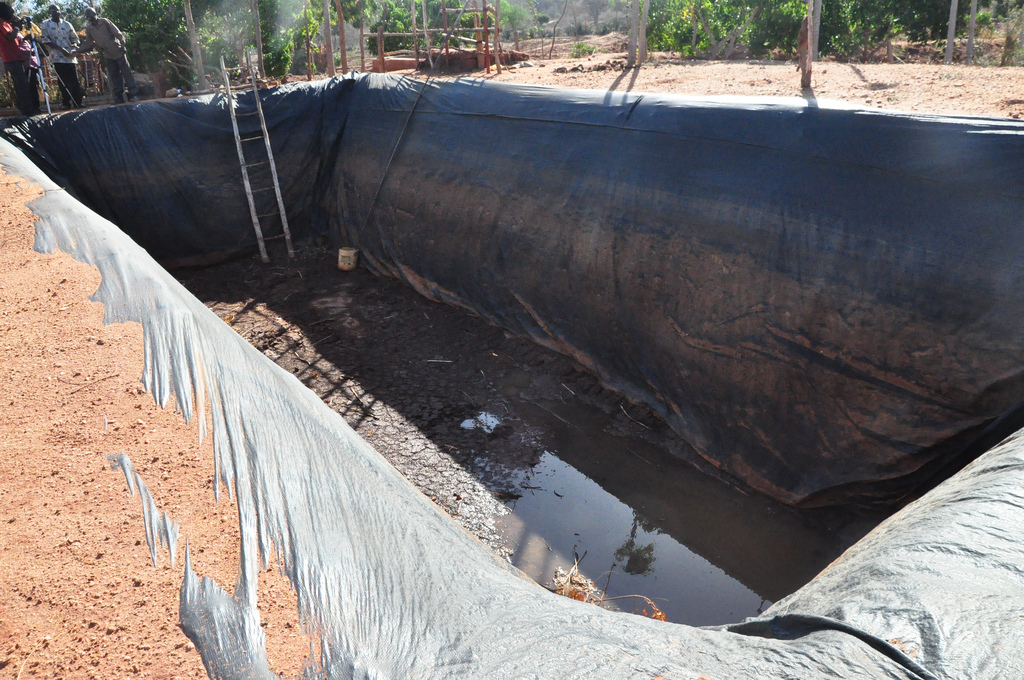 Damliner (Photo/flickr.com)
Damliner (Photo/flickr.com)
A farmer from Njoro, Nakuru County is improving his production capacity from an acre piece of plot to 12 acres courtesy of water harvesting, an art that has earned him national and international award.
According to numerous studies, Nairobi alone could support six to ten million people with 60 liters a day if rainwater harvesting techniques were implemented, reported the organization, with the supply potential of the city running at 460,000 cubic meters – but only 50 per cent of that currently reaching consumers.
But even as the rain pours, we are beset with warnings that as soon as the rain stops we shall return to drought and water shortages. The problem, says UNEP, is not the rainfall, but the water waste. If we harvested the rainfall, we would have plenty of water, and water harvesting isn’t even expensive.
For Bernard Maina from Njoro rainfall runoff water is a resource that has helped him improve the living standards of his family. “I harvest the rainwater running along the roads for irrigation and use it to irrigate my farm. When I started water harvesting, I had only one and a half acres of land. Today, I have 12 acres I bought from the sale of food I grow from the irrigated land,” Maina said.
For his efforts, Maina has been recognized and awarded by the UN Food and Agriculture Organization (FAO) and Kenya’s Ministry of Agriculture among other organizations. He is now used as a success story in showcasing how rainwater harvesting can help transform the lives of small-scale farmers.
RELATED CONTENT: Kenyan entrepreneur wins global award for increasing farmers’ yields with solar energy
Njoro area has clay soils that do not easily absorb or retain water. Therefore, even a small amount of rain leads to water running along the roads onto the farms or any available natural route as it finds its way to the nearest river or swamp. “I block the water and direct it to my shamba (land),” he said. He has made several ground water-holding ponds on his farm and trenches that measure five meters deep and four meters wide.
“By the time the water reaches these holding holes and trenches, it already carries fertile soils that are deposited here. Every three years, I harvest this soil and put it on my land. I also grow bananas on some of the ponds to take advantage of the nutrients from the fertile soils,” he said.
RELATED CONTENT: Water harvesting increases Mwingi farmer’s livestock herd
Maina’s water harvesting technique has a double role of conserving these fertile soils and preventing them from being washed away into the big rivers and finally to the Indian Ocean where most of Kenya’s rivers drain into. Maina learned about water harvesting from Egerton University, which specializes in agriculture and related training. The university also runs a research institute on agriculture policy issues known as Tegemeo Institute.
“Rain is becoming erratic and therefore cannot entirely depend on rainfall for planting food. The good thing about this water harvesting is that I am able to supply food to the market even when the rest of food crop in the area has been affected by poor rainfall, enabling me to fetch better prices,” he said.
The ponds that hold water on his farm ensure that the underground of his farm is well watered as its seeps slowly into the clay soils easing the need for regular sprinkling of water. It is Maina’s little way of mitigating climate change whose effects in Kenya are already being felt through disruption of the rainfall seasons that have existed for generations and drying of former wetter areas as cold seasons also become colder.
Because of the availability of water throughout the year on his farm, Maina has diversified from growing just food for household consumption and local market to a contract supplier of horticulture to factories like Njoro Canning Factory, which cans vegetables, fruits, herbs, and spices.
“I grow a variety of food crops like sweet corn, tomatoes, and maize. I also grow fodder for the livestock,” he said. He has also been able to reclaim formerly dry land to grow bananas for sale to the local market.
RELATED CONTENT: Maasai women farmers lead in water harvesting
So far, Maina has used the money from expanded farming to educate his children up to university level and generally improve the welfare of the family. Maina is a growing pool of small-scale farmers in Kenya who are engaged in water harvesting for commercial use unlike before when most water harvesting at the household fame level was for short-term domestic consumption.
The Kenya government is also trying to promote water harvesting to conserve the resource and maximize its use in view of erratic rainfall.